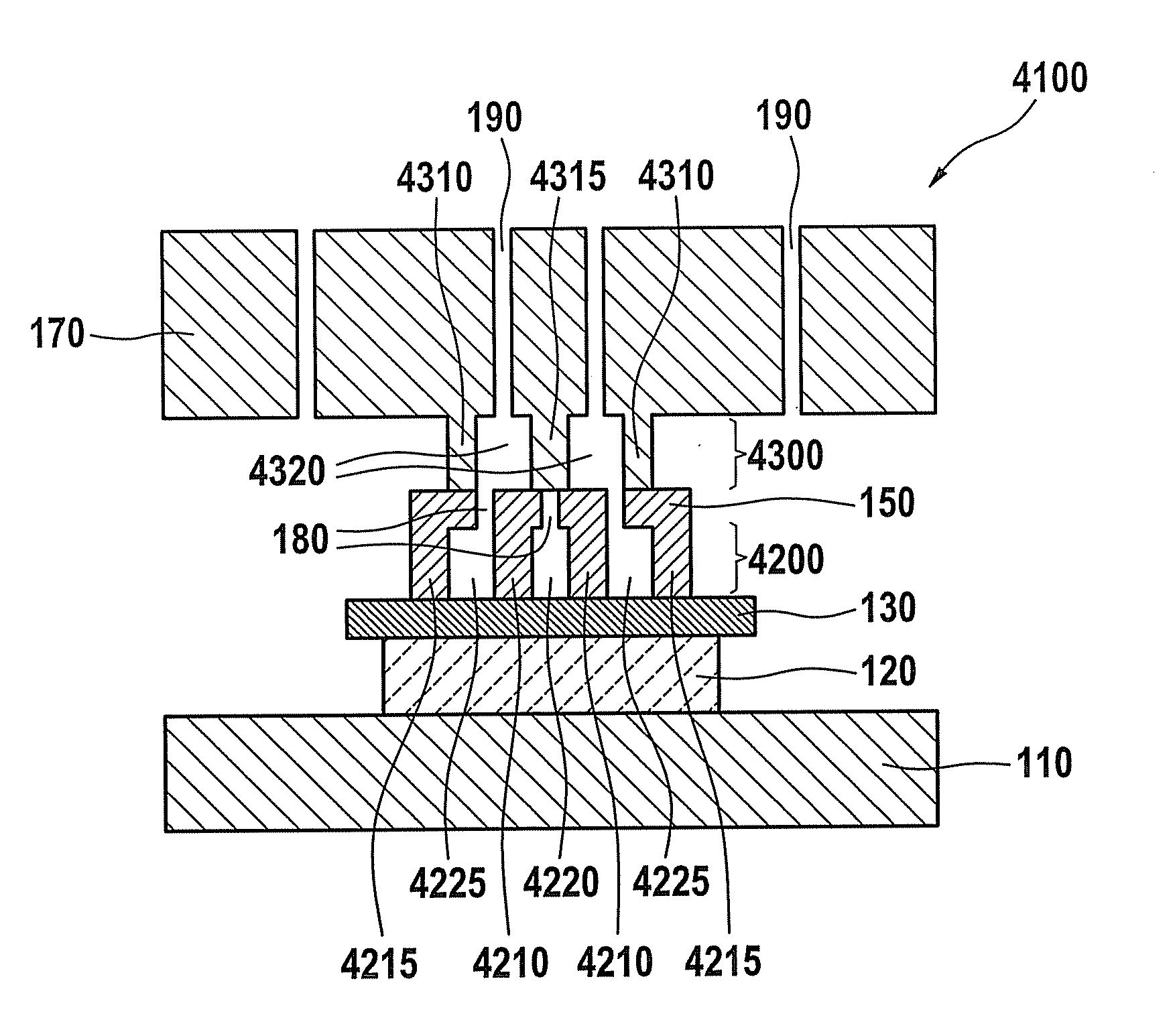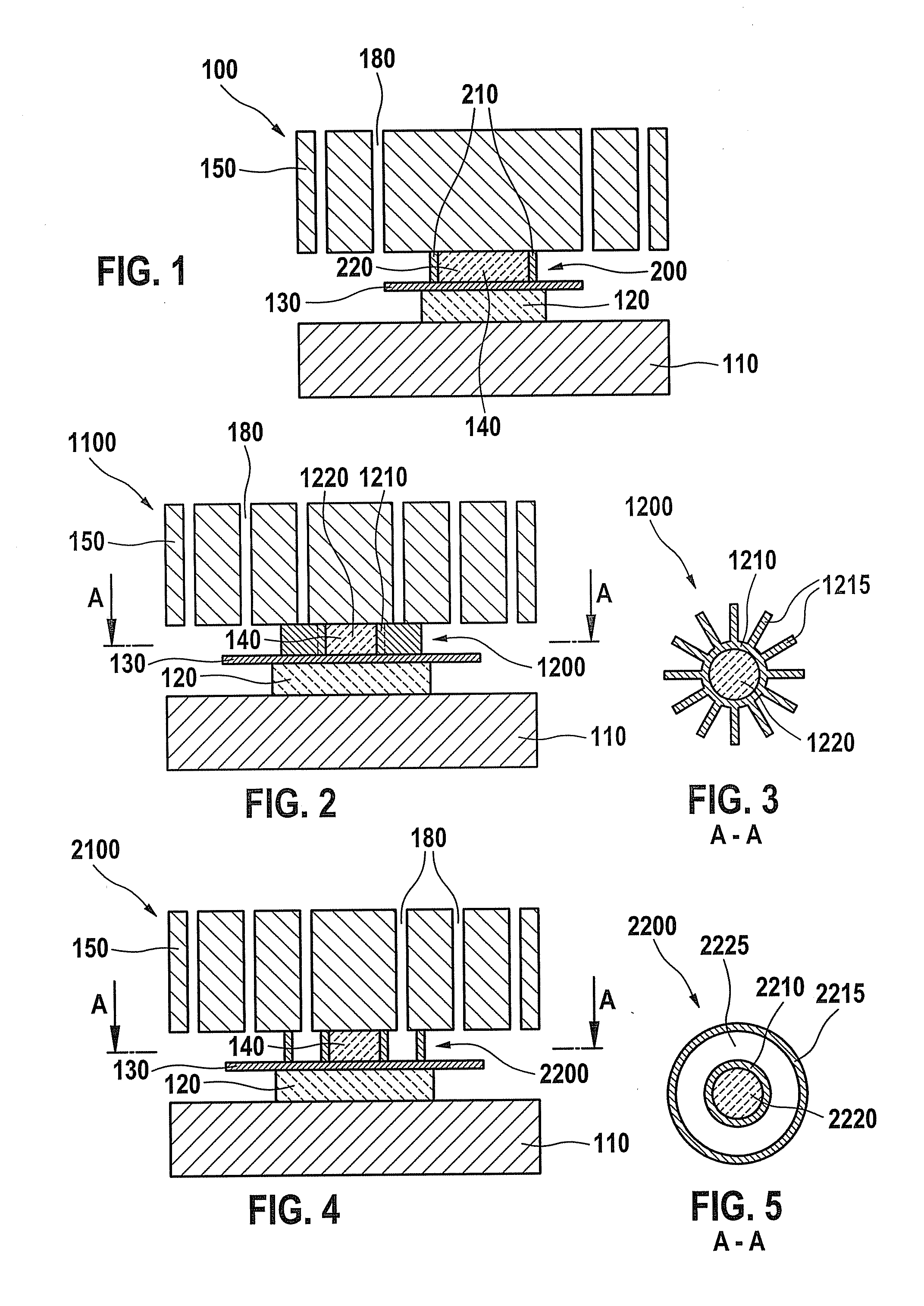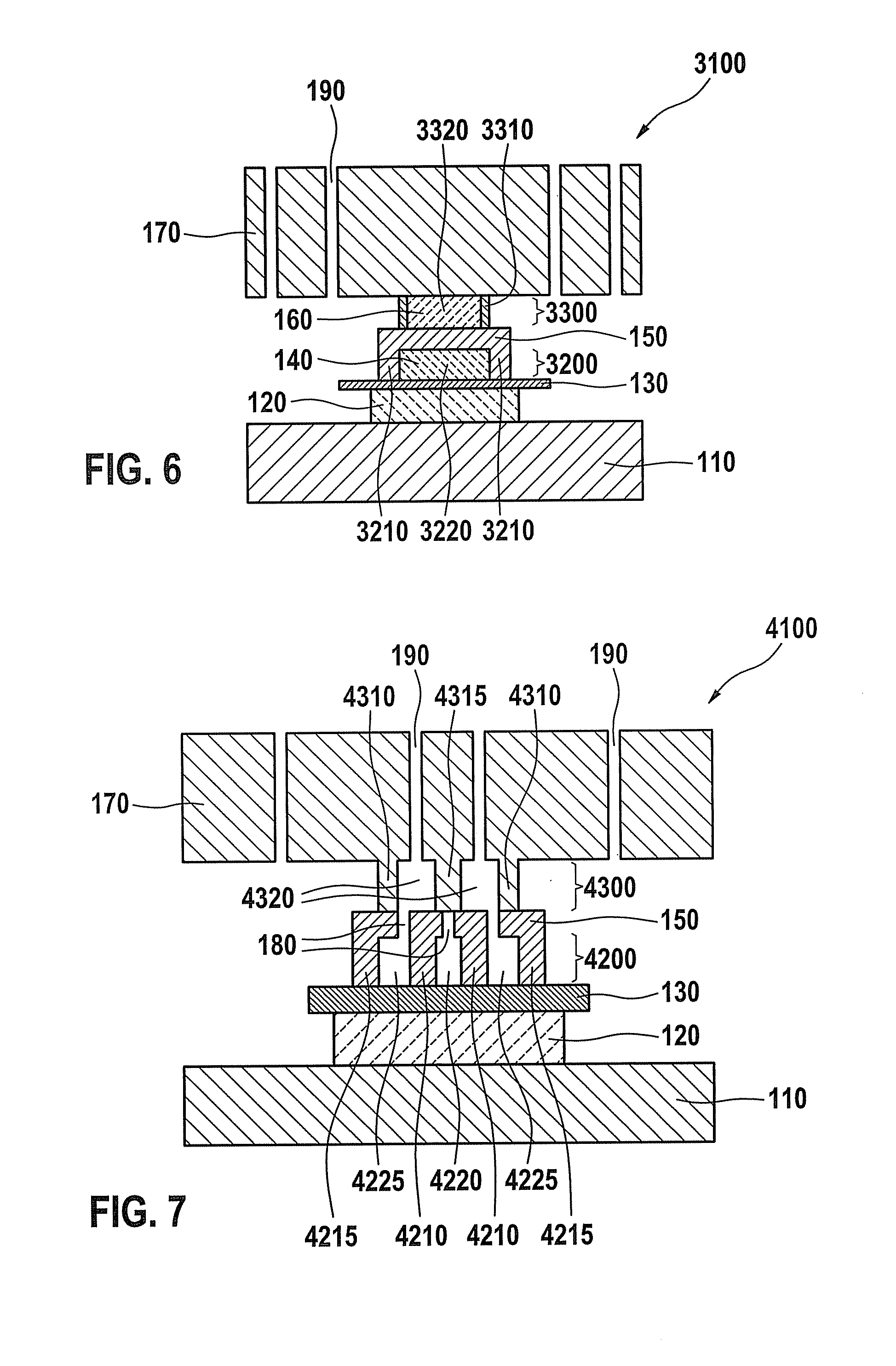Micromechanical system
a micro-mechanical system and micro-mechanical technology, applied in the field of micro-mechanical systems, can solve the problems of marked decline in the mechanical stability of connecting elements, affecting the manufacturing of high-resolution structures,
- Summary
- Abstract
- Description
- Claims
- Application Information
AI Technical Summary
Benefits of technology
Problems solved by technology
Method used
Image
Examples
Embodiment Construction
[0021]FIG. 1 shows a section through a layer structure of a micromechanical system 100 in a highly schematic diagram. Micromechanical system 100 may be part of a micromechanical sensor structure such as an acceleration sensor or a yaw sensor, for example. Micromechanical system 100 includes a substrate 110, which functions as the carrier. Substrate 110 may be a silicon substrate, for example. A first insulating layer 120 is provided on the surface of substrate 110. First insulating layer 120 is preferably embodied as a sacrificial layer and is made of a silicon oxide, for example. A first conductive layer 130 is situated on first insulating layer 120. First conductive layer 130 may be a buried polysilicon layer, for example. For example, conductor paths may be defined in first conductive layer 130. First conductive layer 130 may also function as an electrode. A second insulating layer 140 is situated above first conductive layer 130. Second insulating layer 140 is preferably also de...
PUM
 Login to View More
Login to View More Abstract
Description
Claims
Application Information
 Login to View More
Login to View More - R&D
- Intellectual Property
- Life Sciences
- Materials
- Tech Scout
- Unparalleled Data Quality
- Higher Quality Content
- 60% Fewer Hallucinations
Browse by: Latest US Patents, China's latest patents, Technical Efficacy Thesaurus, Application Domain, Technology Topic, Popular Technical Reports.
© 2025 PatSnap. All rights reserved.Legal|Privacy policy|Modern Slavery Act Transparency Statement|Sitemap|About US| Contact US: help@patsnap.com



